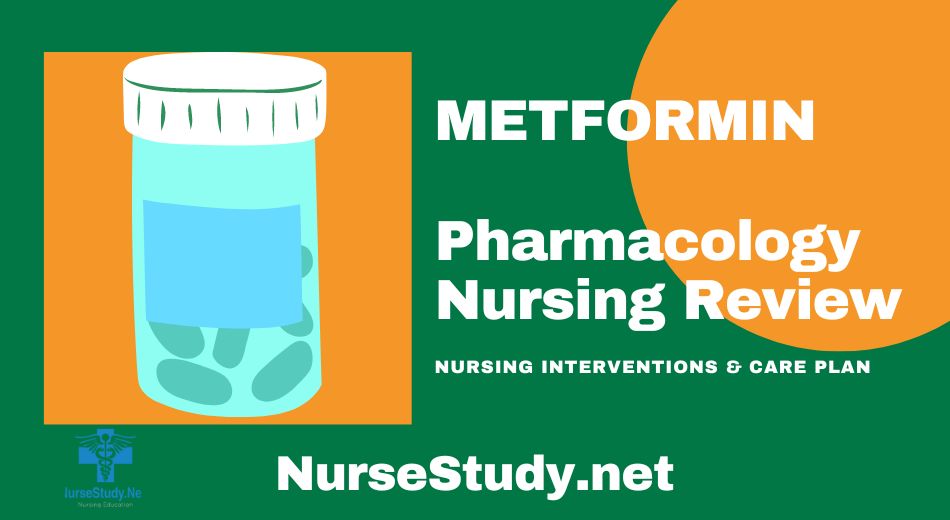Metformin is a biguanide antidiabetic medication commonly prescribed as the first-line treatment for type 2 diabetes mellitus. It decreases glucose production in the liver and improves insulin sensitivity in body tissues.
Generic names: Metformin hydrochloride
Brand names: Glucophage, Glucophage XR, Fortamet, Glumetza, Riomet
Pharmacologic class: Biguanide
Therapeutic class: Antidiabetic, Oral hypoglycemic agent
Mechanism of action: Metformin reduces hepatic glucose production, decreases intestinal glucose absorption, and improves insulin sensitivity by increasing peripheral glucose uptake and utilization.
Indications for use: Type 2 diabetes mellitus management, prediabetes, polycystic ovary syndrome (PCOS), and weight management in conjunction with lifestyle modifications.
Precautions and contraindications: Renal impairment (eGFR < 30 mL/min), acute or chronic metabolic acidosis, severe hepatic dysfunction, and hypersensitivity to metformin. Use cautiously in elderly patients and those undergoing radiologic studies with iodinated contrast materials.
Drug Interactions
- ACE inhibitors and ARBs may increase the risk of hypoglycemia
- Alcohol may increase the risk of lactic acidosis
- Cationic drugs (amiloride, digoxin, morphine, procainamide, quinidine, quinine, ranitidine, triamterene, trimethoprim, vancomycin) may reduce metformin elimination.
- Carbonic anhydrase inhibitors (topiramate, zonisamide) may increase the risk of lactic acidosis.
- Corticosteroids, thiazide diuretics, and thyroid products may decrease metformin’s effectiveness.
Adverse Effects
- Gastrointestinal disturbances: diarrhea, nausea, vomiting, abdominal bloating, flatulence
- Metallic taste in the mouth
- Vitamin B12 deficiency with long-term use
- Hypoglycemia (rare when used alone)
- Lactic acidosis (rare but serious)
- Weight loss or anorexia
- Weakness, myalgia
- Headache, dizziness
Administration Considerations
Available preparations: Immediate-release tablets (500mg, 850mg, 1000mg), extended-release tablets, oral solution
Adult dosages: Initial: 500mg twice daily or 850mg once daily with meals. Maximum daily dose: 2550mg divided into 2-3 doses.
Onset of action: 3-5 days
Peak effect: 2-3 weeks
Duration: 24 hours
Nursing Considerations for Metformin
Related Nursing Diagnoses
- Risk for unstable blood glucose
- Imbalanced nutrition
- Risk for acute confusion related to hypoglycemia
- Knowledge deficit related to medication regimen
- Risk for injury related to hypoglycemic episodes
Nursing Assessment
- Assess blood glucose levels regularly, including fasting and postprandial readings.
- Monitor renal function through BUN and creatinine levels, as the kidneys clear metformin.
- Assess for signs and symptoms of lactic acidosis: weakness, fatigue, muscle pain, difficulty breathing, abdominal pain, dizziness.
- Evaluate the patient’s understanding of diabetes management and medication regimen.
- Monitor weight and dietary intake, as metformin may affect appetite.
Nursing Interventions
- Administer metformin with meals to reduce gastrointestinal side effects.
- Monitor for signs of vitamin B12 deficiency, especially in long-term use.
- Assess for and document any side effects, particularly gastrointestinal disturbances.
- Regularly monitor blood glucose levels and maintain accurate records.
- Discontinue metformin 48 hours before and after procedures using iodinated contrast materials.
Patient Teaching Associated with Metformin
- Take medication with meals to minimize gastrointestinal upset.
- Do not crush or break extended-release tablets; swallow them whole.
- Maintain consistent carbohydrate intake throughout the day.
- Monitor blood glucose regularly and keep a log of readings.
- Report symptoms of lactic acidosis immediately: unusual muscle pain, difficulty breathing, unusual sleepiness, slow/irregular heartbeat.
- Avoid excessive alcohol consumption while taking metformin.
- Continue regular exercise and follow the prescribed diet plan.
- Carry glucose tablets or quick-acting sugar source for potential hypoglycemic episodes.
- Wear medical identification indicating diabetes and metformin use.
- Store medication at room temperature away from moisture and heat.
This is not an all-inclusive list of possible drug interactions, adverse effects, precautions, nursing considerations, or patient instructions. Please consult with a pharmacist for complete information.
References
- Ackley, B. J., Ladwig, G. B., Makic, M. B., Martinez-Kratz, M. R., & Zanotti, M. (2023). Nursing diagnoses handbook: An evidence-based guide to planning care. St. Louis, MO: Elsevier.
- Bc, J. B. D. A., Rosenthal, L., & Yeager, J. J. (2021). Study Guide for Lehne’s Pharmacology for Nursing Care. Saunders.
- Bailey CJ. Metformin: historical overview. Diabetologia. 2017 Sep;60(9):1566-1576. doi: 10.1007/s00125-017-4318-z. Epub 2017 Aug 3. PMID: 28776081.
- Harding, M. M., Kwong, J., & Hagler, D. (2022). Lewis’s Medical-Surgical Nursing: Assessment and Management of Clinical Problems, Single Volume. Elsevier.
- Herdman, T. H., Kamitsuru, S., & Lopes, C. (2024). NANDA International Nursing Diagnoses – Definitions and Classification, 2024-2026.
- Ignatavicius, D. D., Rebar, C., & Heimgartner, N. M. (2023). Medical-Surgical Nursing: Concepts for Clinical Judgment and Collaborative Care. Elsevier.
- Papanas N, Maltezos E, Mikhailidis DP. Metformin: diamonds are forever. Expert Opin Pharmacother. 2009 Oct;10(15):2395-7. doi: 10.1517/14656560903176453. PMID: 19678795.
- Sanchez-Rangel E, Inzucchi SE. Metformin: clinical use in type 2 diabetes. Diabetologia. 2017 Sep;60(9):1586-1593. doi: 10.1007/s00125-017-4336-x. Epub 2017 Aug 2. PMID: 28770321.
- Silvestri, L. A. (2023). Saunders comprehensive review for the NCLEX-RN examination. St. Louis, MO: Elsevier.
